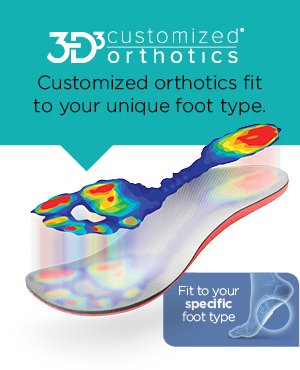ACHILLES TENDONITIS
Learn more about diagnosis, treatment, and preventionCOULD I HAVE ACHILLES TENDONITIS?
Experiencing tenderness, swelling, or redness on the back of your ankle? You may have Achilles tendonitis. Review the causes and symptoms to confirm whether you have it, then explore the available options for dealing with this painful, but treatable condition.
WHAT ARE THE CAUSES AND SYMPTOMS?
Named after a mythological Greek warrior whose only mortal vulnerability lay in his heel, the Achilles tendon connects the calf muscles to the heel bone. Like its namesake, this tendon is significant. As the strongest connective tissue in the body, it boosts us forward when we walk, run, or jump.
If overloaded, the Achilles tendon may become inflamed, leading to Achilles tendonitis. This condition causes swelling and a painful, burning sensation behind the ankle about two inches above the heel. The area may also turn red and feel warm to the touch. Without treatment, scar tissue may build up over time and cause palpable bumps along the tendon.
Experiencing these difficult symptoms daily can interfere not only with your healthful exercise routine, but also with everyday activities.
Experts at FootSmart have identified
several common causes of the irritation that can lead to Achilles tendonitis:
- Injury caused by repetitive overuse, like long-distance running, or trauma to the Achilles tendon, such as a tear. Not surprisingly, injuries such as these lead to the inflammation and pain typical of Achilles tendonitis.
- Tight calf muscles due to inadequate stretching. This tightness can irritate the Achilles tendon and cause inflammation.
- Other painful foot and lower leg conditions, like over-pronation and flat feet. Such conditions can become irritated by lack of proper footwear support and cause irritation in other parts of the foot and leg, such as the Achilles tendon.
THINK YOU MIGHT HAVE ACHILLES TENDONITIS?
TAKE THIS SELF-ASSESSMENT
Self- Assessment Quiz
- Swelling, warmth, and redness in the back of my lower leg.
- Pain in the back of my ankle about two inches above my heel.
- Noticeable pain after I stretch my calves.
Also consider this question to aid your assessment:
Self- Assessment Quiz
- I recently ramped up my exercise routine.
- I do the same load-bearing exercise (like running or aerobics) several times a week.
- I usually don’t take the time to stretch my calf muscles.
- I typically wear flat, unsupportive shoes.
If you answered yes to any of the above conditions, you may have Achilles tendonitis. Read more to find out how to treat the condition and relieve your pain and discomfort.
ARE THERE ANY SERIOUS CONCERNS WITH ACHILLES TENDONITIS?
In most cases, Achilles tendonitis, while painful, is treatable at home or with minimal help from your foot and ankle specialist. Rarely, the tendon may thicken, and hardened nodules, or calcifications, may form where the tendon meets the heel bone. If this happens, the heel bone may become deformed and require invasive surgery to correct.
Be proactive about pursuing treatments for your Achilles tendonitis to avoid this unfortunate scenario.
HOW DO I TREAT AND PREVENT ACHILLES TENDONITIS?
Your first line of defense in the treatment of Achilles tendonitis is rest. Temporarily suspending activities that cause you the most pain can begin to relieve the irritation at the root of Achilles tendonitis. As the irritation subsides, massage and ice your leg for 15 to 20 minutes three times per day to further treat pain and discomfort.
- Use heel lifts in your shoes to reduce inflammation and relieve tension on your Achilles tendon.
- If you also overpronate, find an orthotic insole to help correct your gait, stabilize your foot, and better absorb impact.
- Select athletic shoes with an approximately one-inch heel to further reduce tension and inflammation in the tendon.
- Use an Achilles support with compression that helps increase circulation and relieve pain around the areas of your worst swelling.
- Wear a night splint to help automatically stretch your Achilles tendon over the course of the night.
- Use specialized stretching devices that help relieve pain and strengthen your Achilles tendon. Even just a few minutes of stretching each day is often enough to offer significant relief.
- Stretch your calf muscles before physical activities and on a regular basis.
- Strengthen your calf muscles with calf raises.
If these do-it-yourself treatments have not provided sufficient relief from the pain of Achilles tendonitis, it’s time to consult your foot and ankle specialist. He or she may prescribe any or all of the following to reduce inflammation and invite healing:
- Oral anti-inflammatory medication for short-term use
- Targeted physical therapy for 4 to 6 weeks
- A cast or walking boot (in particularly stubborn cases)
- Extra-corporeal shock wave therapy (ESWT), which is a non-invasive medical treatment
While non-surgical treatments work for most people suffering from Achilles tendonitis, severe cases may demand surgery. The level of invasiveness depends on the severity of your condition. For instance, radio-frequency treatment, a relatively new technique, involves only one small incision and a short recovery time. On the other hand, if calcification has occurred on your heel bone, your surgeon may have to rebuild the area, which requires more extensive recovery time.

